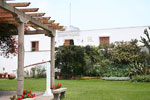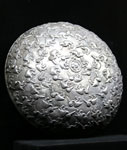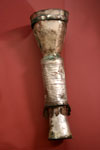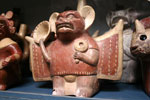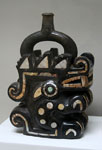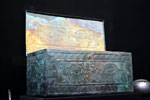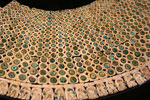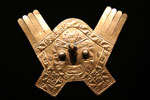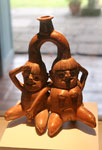Larco Museum

Attention
Location
Telephone
Services
Entrances
From 09:00 to 18:00 hr. Everyday, including holidays.
Av. Bolívar N° 1515, Pueblo Libre, Lima
(+511) 461-1312 / 461-1835
Temporary exhibitions, jeweler's shop, bookshops, souvenirs shop, cafe - restaurant.
S/.30 General fee, - S/.25 Senior citizens of age of 65
S/.15 Students or Children (children under 8 years old are free).
Located in a unique vice-royal mansion of the 18th century built over a 7th century pre-Columbian pyramid, is surrounded by beautiful gardens that won the price for best gardens in Peru in January 2009. The main idea of Rafael Larco Hoyle, the archeologist founder of the Larco Museum in 1926, was to share his passion for pre-Columbian art and its development until the Spanish arrival. This passion makes him investigate through all his life (1901 – 1967) and to discovery important societies such as the Lambayeque, Salinar, Virú and the Mochica. Its masterpieces are considered worldwide icons of Pre-Columbian art, after being exhibited in the world's leading museums.
The great Cultures Hall
Shows remarkable chronological galleries providing an excellent overview on 4500 years of development of Peruvian pre-Columbian history. The Larco Museum is renowned for its Mochica Collection, but is also appreciated for the easy and didactic information about the art, beliefs and rituals of the pre-Columbian societies of Peru, organized by time and place, providing an excellent brief of Peru as one of the world’s cradles of civilization.
The Sacrifice Ceremony Gallery
Narrates a scene of human sacrifice from the Mochica religion that was represented in the celebrated “Larco bottle” that has great importance to the collection, as it is one of a kind. The ceremony began with the ritual battle between important warriors and ended with the sacrifice of the ones that lost the combat so their blood was presented in a goblet to the main Gods. The rulers and priests dressed up with their best apparels for this ceremony, covered in gold and silver, so that their supernatural nature was to be appreciated.
Ancient Peru Gold and Silver Gallery at Larco Museum.
Shows the biggest and finest collection of jewelry used by the most important rulers of pre-Columbian Peru. In Ancient times, the color of gold and silver, associated with the sun and the moon, as they shine and durability in time, made metals the material expression of supernatural powers. This gallery comprises an impressive collection of crowns, earrings, nose ornaments, garments, masks and vases, finely wrought in gold and decorated with semi-precious stones. These pieces are icons of pre-Columbian Peru, as the collections of the Larco Museum became the most photographed after having been displayed in successful international exhibitions in the most important museums in the world.
The Erotic Gallery
Is one of the highlights of the collection. Ancient Peruvian cultures represented their daily life in ceramics, but one of the most surprising artistic expressions in the world is the erotic ceramic, which clearly shows the variety of sexual practice in Peru during the 2nd century AD. The Erotic Gallery of the Larco Museum holds the world’s biggest collection of this fascinating ancient sexual theme, which has turned this tourist place into a must for travelers to South America.
The storage area is open to the public.
Museums all over the world usually exhibit only 20% of their entire collection, but Museo Larco is one of the few museums in the world that allows its visitors to go into its classified storage area. The opportunity to see 45,000 objects duly arranged, catalogued and classified by culture and theme becomes an extraordinary and unforgettable experience.
• Museo Larco Photo Gallery | • Erotic Gallery - Museo Larco Photo Gallery |
 LIMA PHOTO GALLERY
LIMA PHOTO GALLERY
- Caral
- Cementerio Presbitero Maestro
- Chorrillos
- Huaca Pucllana
- Huancaya Valley
- Magic Circuit of the Water
- Miraflores
 BIRDS OF LIMA - PHOTO GALLERY
BIRDS OF LIMA - PHOTO GALLERY
- Birds in Andean Valley - (Cañete, canta and Santa Eulalia Valleys)
- Birds in coastal marshes in Peru # 1 (Swamps of Villa)
- Birds in coastal marshes in Peru # 2 (Swamps of Villa)
- Birds in coastal marshes in Peru # 3 (Medio Mundo and Paraiso)
 LIMA TRAVEL GUIDE - SEE ALSO...
LIMA TRAVEL GUIDE - SEE ALSO...
- Lima Travel Guide
- Historical Center of Lima
- Museums in Lima
- Religious Monuments in Lima
- Colonial Mansions in Lima
- Around Lima
- San Isidro and Miraflores
- Barranco
- El Rimac
- El Callao
